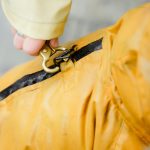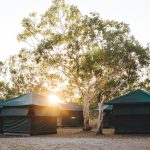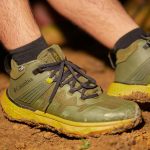When it comes to waterproofing your outdoor gear, you're not just protecting your investment; you're also ensuring your comfort and safety in unpredictable weather. You need to understand waterproof ratings and choose the right materials, but it doesn't stop there. Regular cleaning and maintenance are crucial to keeping your gear in top shape. Have you considered how improper storage could undermine your efforts? The choices you make can significantly impact your gear's performance, so let's explore the essential practices that can help you maximize its lifespan.
Table of Contents
Key Takeaways
- Choose high-quality waterproof fabrics like Gore-Tex and ensure features like sealed seams for enhanced water resistance.
- Clean gear regularly using gentle soap and air dry to maintain waterproof properties and prevent damage.
- Apply waterproofing treatments specifically designed for your gear materials, ensuring even coverage for optimal protection.
- Store gear in a cool, dry place, ensuring it is completely dry to prevent mold and mildew growth.
Understand Waterproof Ratings
When choosing outdoor gear, it's essential to understand waterproof ratings, as they indicate how well a product can withstand moisture. These ratings typically measure the amount of water pressure a fabric can resist before leakage occurs. You'll often see ratings expressed in millimeters (mm), with higher numbers indicating better waterproofing. For example, a jacket rated at 10,000 mm can withstand heavy rain and snow without letting moisture in.
It's crucial to note that waterproof ratings aren't the only factor to consider. Breathability is another key aspect, especially during high-intensity activities where sweat can build up inside your gear. You'll want a balance between waterproofing and breathability to ensure comfort.
Additionally, pay attention to other features like sealed seams and water-resistant zippers. Even the most highly rated fabric can fail if the construction isn't up to par.
Remember to think about the conditions you'll face. For instance, if you're hiking in a light drizzle, a lower rating might suffice, but for heavy downpours, aim for gear with higher ratings.
Choose the Right Materials
Choosing the right materials for your outdoor gear significantly impacts its performance and durability in wet conditions. When you're out in the elements, the materials you choose can either keep you dry or leave you soaked and uncomfortable.
Here are some things to consider when selecting materials for waterproofing:
- Waterproof Fabrics: Look for materials like Gore-Tex or eVent, which are designed to repel water while allowing moisture to escape. This combo keeps you dry from both the outside and the inside.
- Seam Sealing: Make sure the gear features sealed seams. This detail helps prevent water from sneaking in through the stitches, which can be a common failure point in outdoor gear.
Clean Your Gear Properly
Maintaining the waterproofing of your gear starts with cleaning it properly to remove dirt and oils that can compromise its effectiveness.
Begin by checking the manufacturer's instructions for specific cleaning guidelines tailored to your gear's materials. For most items, a gentle soap and water solution will do the trick.
Use a soft brush or cloth to scrub away any grime, focusing on areas that are prone to accumulating dirt, like seams and zippers. Rinse thoroughly to ensure all soap is removed, as residue can lead to build-up over time. For more stubborn stains, consider using a specialized cleaner designed for waterproof gear.
After cleaning, allow your gear to air dry completely. Avoid exposing it to direct sunlight or high heat, as these can damage the materials and reduce waterproofing.
Once dry, inspect your gear for any signs of wear or damage, as these can also affect its performance.
Apply Waterproofing Treatments
To keep your outdoor gear performing at its best, applying a waterproofing treatment is essential after cleaning. This process helps restore the protective barrier that keeps moisture out, ensuring your gear stays effective during your adventures.
Here's how you can do it effectively:
- Choose the Right Product: Select a waterproofing treatment designed for the specific material of your gear, whether it's fabric, leather, or synthetic materials.
- Follow Instructions: Always read the manufacturer's instructions carefully. Some products require specific application methods or drying times to be effective.
- Apply Evenly: Use a spray or sponge to apply the treatment evenly across the surface. Make sure you cover all seams and areas that are prone to water exposure.
After applying the treatment, let your gear dry completely before using it again. This ensures that the waterproofing agent bonds effectively, maximizing protection against the elements.
Regularly treating your gear will extend its lifespan and keep it functioning as it should, so don't skip this crucial step in your outdoor gear maintenance routine!
Store Gear Correctly
After applying waterproofing treatments, proper storage of your gear is vital to ensure it remains in top condition for your next adventure.
First, make sure your gear is completely dry before storing it. Moisture can lead to mold and mildew, which can ruin your equipment.
Store your gear in a cool, dry place where temperatures are stable. Avoid attics or basements, as temperature fluctuations can damage materials.
Use breathable storage bags or containers instead of plastic, which can trap moisture.
Keep your gear away from direct sunlight, as UV rays can degrade fabrics and coatings over time.
If possible, hang items like jackets or tents to maintain their shape and prevent creasing.
For smaller items, consider using hooks or shelves to organize everything neatly.
Regularly Inspect and Maintain
Regular inspections of your outdoor gear can catch potential issues before they become major problems. By regularly checking your equipment, you're not only prolonging its lifespan but also ensuring that it performs optimally when you need it most.
Here's what to focus on during your inspections:
- Seams and Stitching: Look for any frayed threads or tears. These can compromise your gear's waterproofing and overall integrity.
- Zippers and Closures: Test zippers and buckles to ensure they operate smoothly. Lubricate them if necessary to prevent sticking or breaking.
Make it a habit to inspect your gear before each trip or at least seasonally. If you spot any issues, address them promptly.
Regular maintenance, like washing and reapplying waterproof treatments, can also help keep your gear in top shape. By staying proactive, you'll enjoy peace of mind and a better outdoor experience, knowing your gear is ready for whatever nature throws your way.
Frequently Asked Questions
How Do I Know if My Gear Is Truly Waterproof?
To know if your gear's truly waterproof, check for a waterproof rating, look for sealed seams, and conduct a water test. If water beads up and doesn't soak in, it's likely doing its job.
Can I Waterproof Gear Made of Synthetic Materials?
Yes, you can waterproof gear made of synthetic materials. Many products specifically designed for synthetics exist, so check labels. Applying a waterproofing spray or treatment can enhance the water resistance of your gear effectively.
What Is the Lifespan of Waterproof Treatments?
The lifespan of waterproof treatments varies, but you can generally expect them to last anywhere from a few months to several years, depending on usage and care. Regular maintenance helps extend their effectiveness significantly.
Is It Safe to Use Homemade Waterproofing Solutions?
Using homemade waterproofing solutions can be risky. While some ingredients might work, you can't guarantee effectiveness or safety. It's better to stick with proven products to ensure your gear stays protected and functional.
Do Waterproofing Treatments Affect Breathability of the Material?
Waterproofing treatments can impact a material's breathability. When you apply these treatments, you might notice reduced airflow, which can lead to discomfort during physical activity. It's essential to choose a balance between waterproofing and breathability for optimal performance.
- Is Felt a True Nonwoven Fabric? A Technical Explanation - July 11, 2025
- Comparing Nonwoven Geotextile Fabric for Driveways and Drains - July 11, 2025
- Nonwoven Polypropylene: Is It Washable and Reusable? - July 11, 2025







